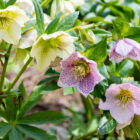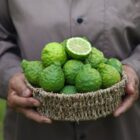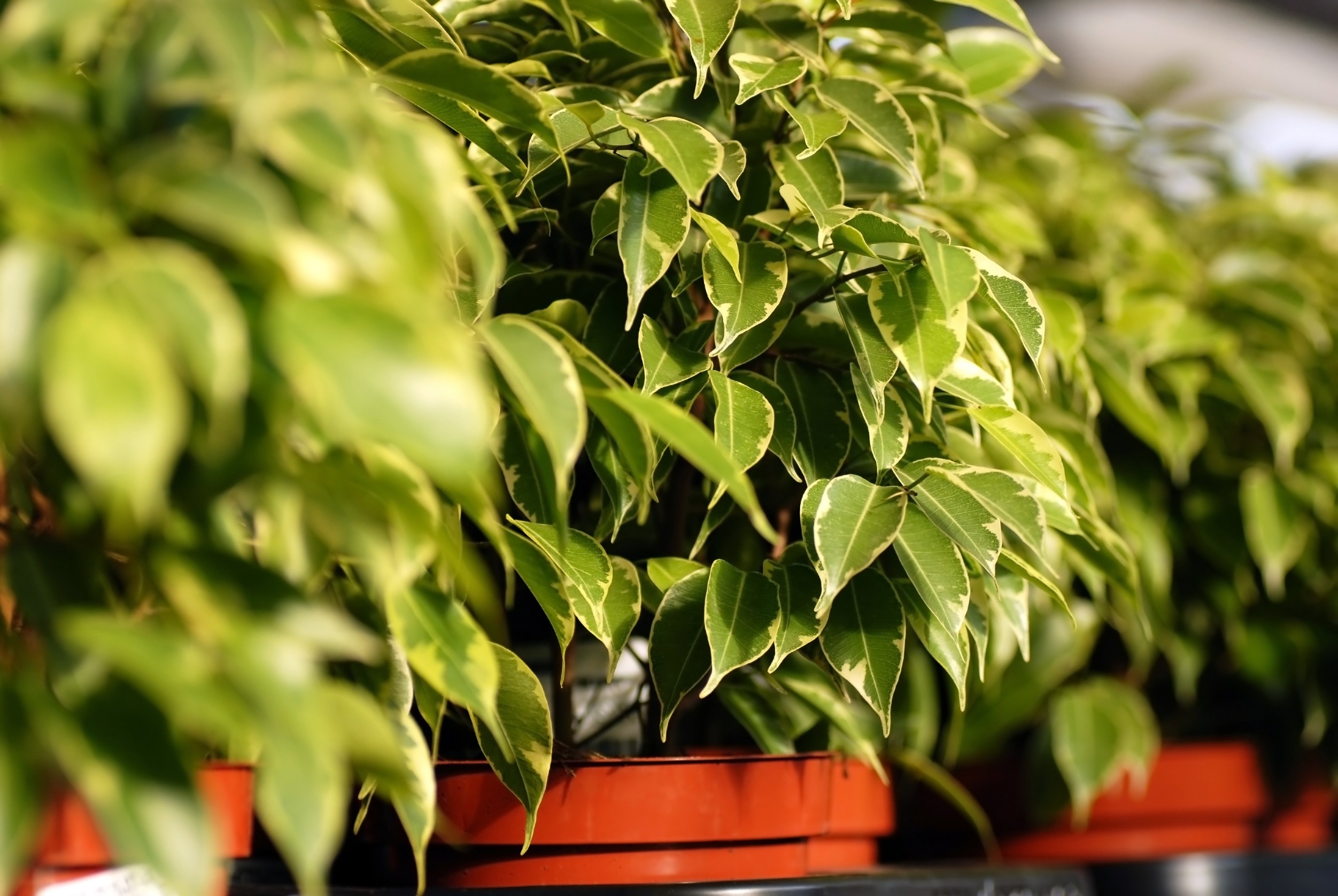
Ficus Benjamina, tips on caring for and fertilising the rubber tree
Ficus Benjamina
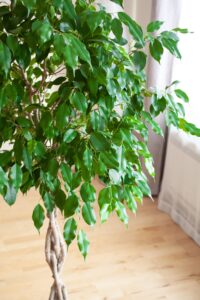 The Ficus Benjamina or rubber tree, is a tropical plant belonging to the Moraceae family. In nature, it can reach 30 metres in height. People usually appreciate this plant for its ability to adapt to indoor environments in homes and offices. This plant has many meanings. Among these, there are: good luck,prosperity, healing and protection. Today there are a lot of varieties of Ficus Benjamina, such as the bonsai ficus benjamina, or ficus bonsai. Generally, it is very easy to take care of this bonsai. Actually, it is perfect for those who are learning this beautiful art. Finally, in some regions, it can even grow outdoors and in the ground. Various botanical gardens even allow to admire some beautiful specimens of these plants.
The Ficus Benjamina or rubber tree, is a tropical plant belonging to the Moraceae family. In nature, it can reach 30 metres in height. People usually appreciate this plant for its ability to adapt to indoor environments in homes and offices. This plant has many meanings. Among these, there are: good luck,prosperity, healing and protection. Today there are a lot of varieties of Ficus Benjamina, such as the bonsai ficus benjamina, or ficus bonsai. Generally, it is very easy to take care of this bonsai. Actually, it is perfect for those who are learning this beautiful art. Finally, in some regions, it can even grow outdoors and in the ground. Various botanical gardens even allow to admire some beautiful specimens of these plants.
Discover varieties of Ficus Benjamina
The choice of a ficus depends not only on personal preference but also on other factors, such as environmental conditions and experience in plant care. There are many varieties of Ficus Benjamina. In particular, they differ not only in size, but also in growth, colour and leaf shape. Among the most common varieties are the Ficus Benjamina Golden King. It is among the evergreen trees that are able to grow up to 2 metres high in nature. The plant has a grey stem and the branches are slender and arching. The leaves are oval and glossy green with yellow/ivory edges. It is characterised by its aerial roots. They are useful for the distribution of the weight of its large foliage.
Choose your favourite Ficus Benjamina
Another popular plant is the Ficus Starlight. Its leaves present a mix of creamy-white and green colours. Very elegant is the Ficus Benjamina Exotica. It has small, narrow and slightly pointed leaves. The leaves of various colors have an irregular contour cream color. In contrast, the leaves of the Ficus Benjamina Midnight are dark green.
Are Ficus Benjamina and Ficus Microcarpa the same plant?
The ficus microcarpa and the ficus benjamina are not the same plant. In particular, they differ in the plant care and appearance. The leaves of the ficus microcarpa are smaller, darker and glossy. Those of the benjamina are green in colour but with variegated edges. In nature, the ficus benjamina can become a fairly tall plant while the microcarpa is of modest size and can also be grown as a bonsai. The latter adapts well to various environmental conditions. Whereas the ficus benjamina needs more care and attention.
How do you care for a benjamina plant?
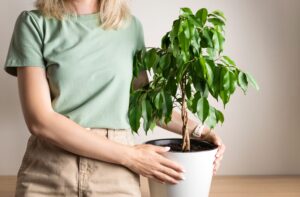
Ficus trees only require little attention for their vigorous growth. It is advisable to monitor the plants to understand their needs. Ficus Benjamina likes a temperature between 18°C and 24°C. It requires soft light and no cold draughts. In fact, it is afraid of temperature fluctuations. It should only be watered when the soil is dry. Also avoid waterlogging, which can cause fungal diseases. Always ensure that the pot has good drainage. It is a plant that appreciates medium to high humidity. Therefore, if the air in the house is dry, it is preferable to place a bowl of water near the pot. Transplant every 2 years or when the roots emerge from the pot. During this operation, it is advisable to use a specific topsoil for these plants. Finally, to ensure that the plants always have a thick crown, it is necessary to slightly prune the longer branches.
Leaf fall: how to intervene?
The Ficus Benjamina is very sensitive also to changes in environment. In particular, leaf fall may occur when it is placed in a new environment. However, it recovers once it adapts to it.
Ficus Benjamina: which fertiliser to use?
There are many fertilisers available on the market. There are liquid fertilisers, water-soluble granules, pellet, organic and chemical fertilisers. For plants grown indoors and in offices, it is preferable to use a water-soluble fertiliser. These products release nutrients gradually and does not give off unpleasant odours. Moreover, for these plants, fertilisers should have a good percentage of nitrogen. This nutrient is important to promote the foliage development. Doctor Bioges recommends always using a fertiliser for green plants. In particular, it is preferable to fertilise them during the spring and summer.
Discover VerdeOk fertiliser
VerdeOk is a water-soluble fertiliser ideal for fertilising all green plants grown in pots, in the garden and on the balcony at home. Its high nitrogen content improves the healthy plant development. In addition, this macronutrient, along with phosphorus and potassium, promote plant resistance to various forms of stress. The formulation also contain RyZea, a pool of bioactive seaweed molecules. This tecnology stimulates plant metabolism, and promotes the enzymatic processes of the substrate. In addition, the special technology is able to unlock nutrients from the soil, and improves the absorption of essential nutrients by the plant.
How to apply VerdeOk fertiliser
For plants grown in pots, dissolve 10-15 g in 10 litres of water. For plants grown in the garden, 15-20 g/plant should be distributed on the surface. Make sure you keep the soil damp before applying the fertiliser. Repeat the application every 10 days.
Stay up to date with our latest gardening news!

